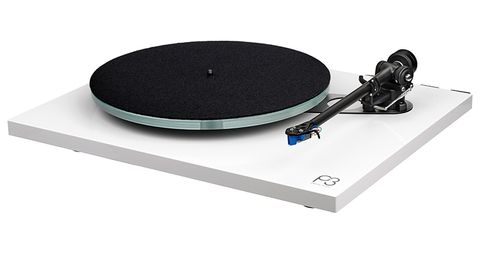BSR, a British business, introduced the ADC brand of budget-to-mid-priced turntables in November 1979. Because BSR was a troubled brand, it made natural to adopt the name of the American corporation that controlled it. The Audio Dynamics Corporation had been developing significant vinyl sources for nearly two decades and was a well-known manufacturer of cutting-edge cartridges and tonearms at the time.
The Connecticut firm, which was founded by Peter Earnest Prichard in the early 1960s and created induced magnetic cartridges, had a reputation for inventiveness. The aesthetic of the ADC 1500, 1600, and 1700 turntables reflected this – the satin black finish and red pinstripe details were sleek, modern, and almost stark. BSR, on the other hand, was known for their bulky, crude idler drive auto changers, which were frequently found in bargain music stores and were typically covered with fake teak thanks to sticky-back plastic. It was a no-brainer to choose the ADC brand for its new line of higher-end turntables.
The new bottom-of-the-range ADC 1500 cost £85, compared to £35-£55 for BSR badged decks. It had a belt drive, manual operation, and a rather high-quality stainless steel tubed, S-shaped tonearm sourced from Japan. It came with a nice QLM 34 cartridge, which made it look like a great deal. The real action, though, began around £110 with the ADC 1600. This had a direct drive operation and a straight-tube ADC ALT-1 tonearm, which sold separately for about £55. It was a significant upgrade, not least because an ADC QLM 36 was installed, which could be purchased separately for £15. The 1700, on the other hand, was the crown gem, a £130 design with switchable quartz-lock speed control and a £60 XLM Mk III cartridge capable of tracking at 0.75g — it seemed to be the pinnacle of refinement.
Every new ADC deck had an injection-molded ABS base with dampening foam on the inside. It was somewhat inert, but by today’s standards, it was still plasticky. Despite the addition of high-quality isolating feet, the 1700 remains extremely sensitive to placement and sounds much better when the green tinted plastic dustcover is removed. If the included rubber platter pad is removed, the ADC uses a 302mm, 1kg dynamically balanced aluminium platter that rings badly. Inset are stroboscopic markings that work in tandem with an LED connected to the quartz lock circuit to produce a sharper visual impression than neon-based competitors. The quartz lock system, which ran at 5.8MHz, was switchable, allowing the speed to be adjusted by 6% when it was defeated. The manufacturer claimed a low -70dB (DIN B) of rumble and a very good 0.03 percent WRMS wow and flutter figure.
The ALT-1 tonearm shared the LMF series’ open cradle suspension, micron-polished ball race lateral instrument bearings, carbon-fiber headshell, and lead out wires, but with a black anodized aluminium armtube and a new decoupled counterweight construction. It’s a low-mass design for high-compliance moving magnet cartridges like the ADC XLM; Ortofon’s OM10 is an excellent modern version.
The ADC 1700 is a respectable performer acoustically, but nothing spectacular. Basically, it looks better than it sounds. The biggest problem is its inability to deal with airborne and ground-borne vibrations; yet, if you put it correctly, it produces a pacey, propulsive sound with a reasonable amount of clarity. The deck, in part because to the tonearm, lacks weight and grunt; it tracks nicely but lacks the power of price rivals like the Rega Planar 2 of the time. Although expansive from left to right, the midband is a tad narrow and two-dimensional. The bass is clear, and the treble is finely defined, but there is no genuine insight. The ADC 1700 is a respectable little deck, but its main selling point these days is its elegance and inexpensive price — you can get one for as little as £50. They’re excellent value for money at that pricing.







